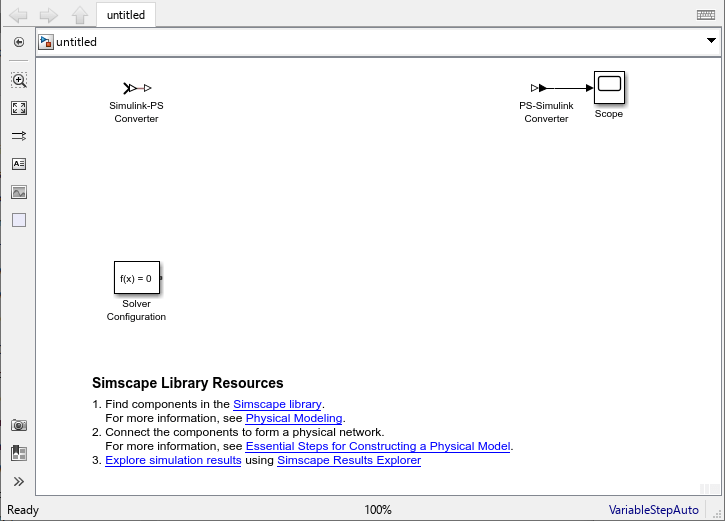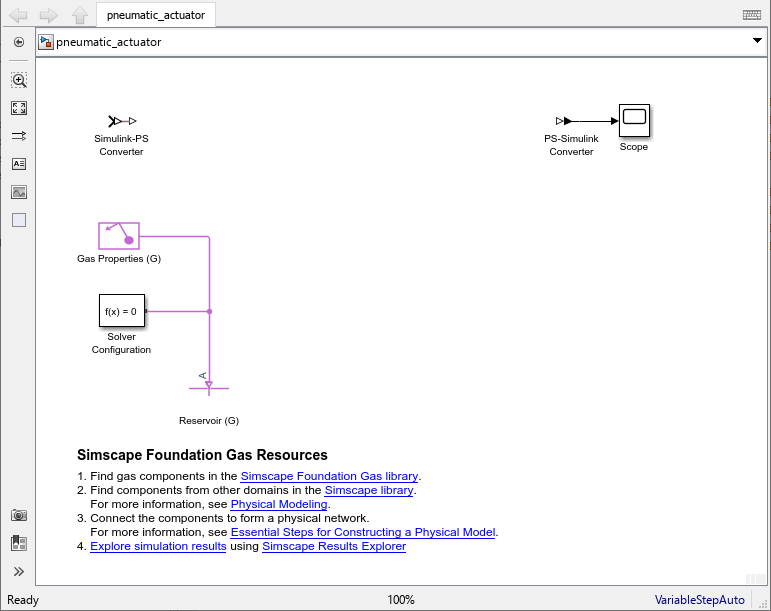ssc_new
(To be removed) Create new Simscape model populated by required and commonly used blocks
ssc_new will be removed in a future release. Use sscnew
instead. (since R2024b) Syntax and arguments of the two functions are identical.
Description
ssc_new creates a new Simscape™ model, with required and commonly used blocks already on the model canvas. The
model uses the recommended solver VariableStepAuto with the absolute
tolerance, AbsTol, set to 1e-3.
The function also turns on simulation data logging for the whole model, using the
default workspace variable name simlog and limiting the logged simulation
data to 10000 points. For more information, see Data Logging.
By default, the function uses the Simulink® default new model name untitled and the recommended solver
VariableStepAuto.
Using ssc_new to create a model is equivalent to opening the
corresponding Simscape template from the Simulink Start Page.
ssc_new( creates a new Simscape model with the specified name. modelname)

